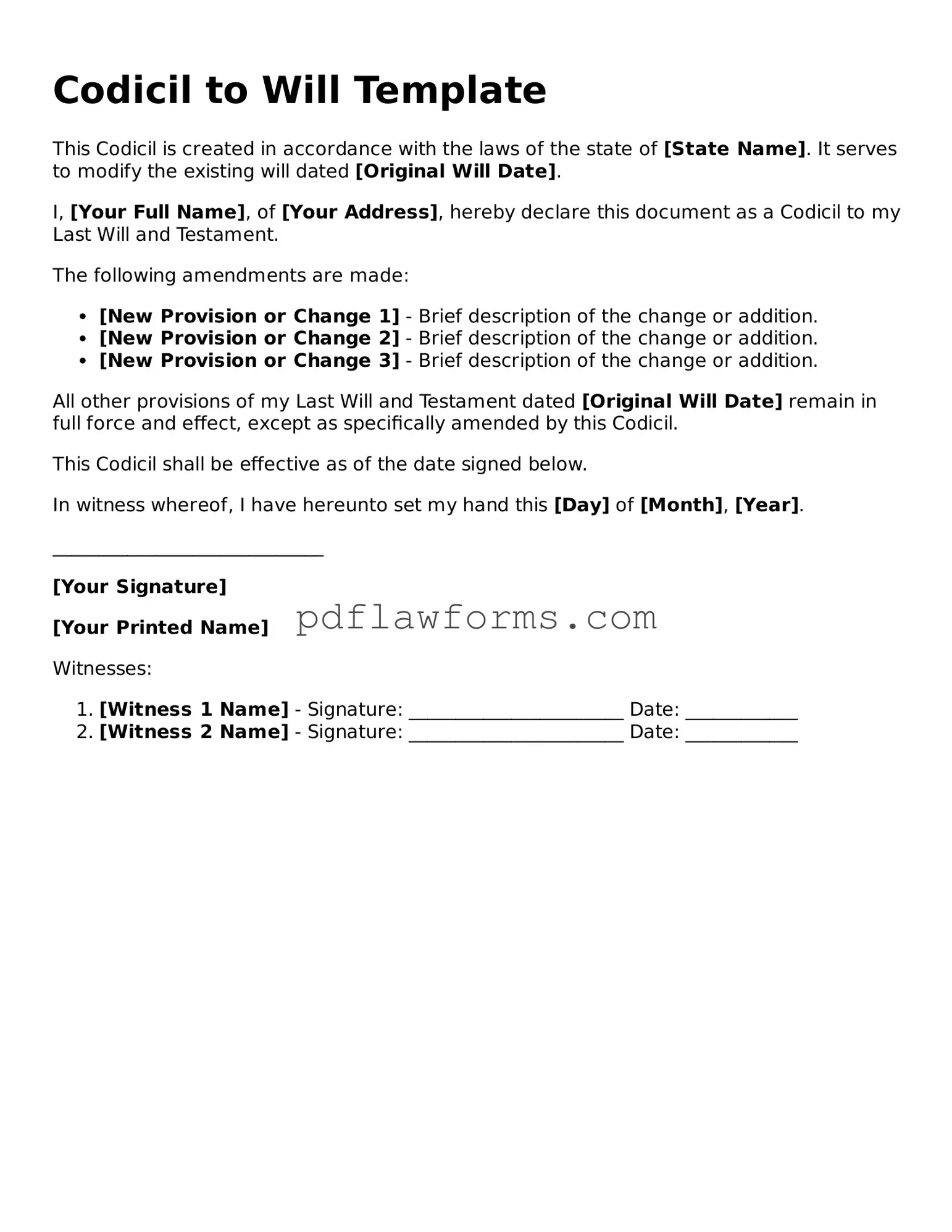Filling out a Codicil to Will form can be straightforward, but many people make mistakes that can lead to confusion or even invalidate their wishes. One common error is failing to properly identify the original will. It's essential to reference the original document accurately. If you don’t include the date or title of the original will, it can create uncertainty about which will you are modifying.
Another mistake is not clearly stating the changes. A codicil should specify what is being added or changed in the will. Vague language can lead to misinterpretation. Be direct and precise about the modifications you intend to make.
People often overlook the need for proper signatures. A codicil must be signed by you and, in many states, witnessed by at least two individuals. If the signatures are missing or improperly executed, the codicil may not hold up in court.
Not dating the codicil is another frequent mistake. Every codicil should include the date it was signed. This detail is crucial for establishing the order of documents and ensuring that your most recent wishes are honored.
Some individuals forget to revoke previous codicils. If you create a new codicil, it’s a good practice to state that any prior codicils are revoked. This step prevents any confusion about which document is valid.
Failing to store the codicil with the original will can lead to issues later. If your codicil is misplaced or found separately from the original will, your intentions may be questioned. Keep all related documents together in a safe place.
Finally, people often neglect to review the entire will after making changes. A codicil can affect other parts of the will, and it’s essential to ensure everything aligns with your current wishes. Take the time to read through everything before finalizing your codicil.
